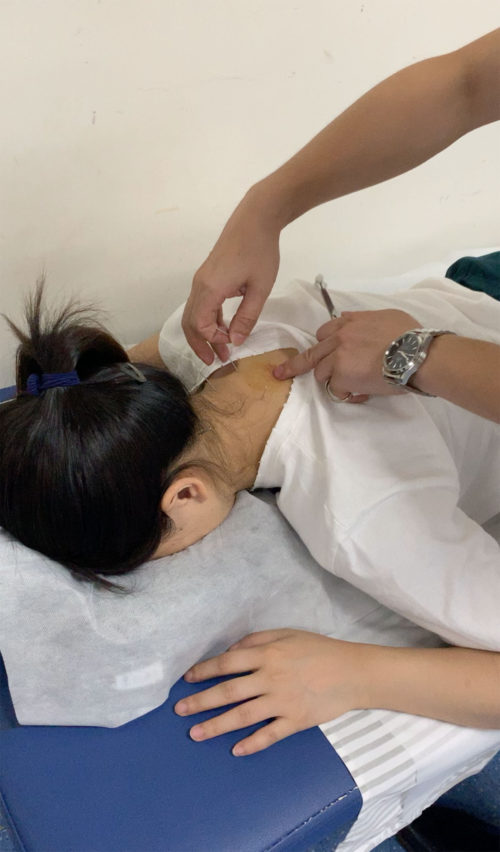Evidence on the efficacy of acupuncture for reducing the pain and dysfunction of osteoarthritis is equivocal.

A patient receiving acupuncture therapy
A randomized, controlled trial.
SETTING: Two outpatient clinics (an integrative medicine facility and a rheumatology facility) are located in academic teaching hospitals, and 1 clinical trial facility.
PATIENTS:
570 patients with osteoarthritis of the knee (mean age [+/-SD], 65.5 +/- 8.4 years).
INTERVENTION:
23 true acupuncture sessions over 26 weeks. Controls received 6 two-hour sessions over 12 weeks or 23 sham acupuncture sessions over 26 weeks.
MEASUREMENTS:
Primary outcomes were changes in the Western Ontario and McMaster Universities Osteoarthritis Index (WOMAC) pain and function scores at 8 and 26 weeks. Secondary outcomes were patient global assessment, 6-minute walk distance, and physical health scores of the 36-Item Short-Form Health Survey (SF-36).
RESULTS:
The (mean difference, -2.5 [CI, -4.7 to -0.4]; P = 0.01), WOMAC pain score (mean difference, -0.87 [CI, -1.58 to -0.16];P = 0.003). With the patient global assessment (mean difference, 0.26 [CI, 0.07 to 0.45]; P = 0.02).
LIMITATIONS:
At 26 weeks, 43% of the participants in the education group and 25% in each of the true and sham acupuncture groups were not available for analysis.
CONCLUSIONS:
Resources
1- University of Maryland School of Medicine, Baltimore, Maryland 21207, USA. All rights reserved.
– http://www.ncbi.nlm.nih.gov/pubmed/15611487?ordinalpos=&itool=EntrezSyst…
The effectiveness of Acupuncture is at the forefront of Dr. Tony’s treatment principles in Delray Beach.